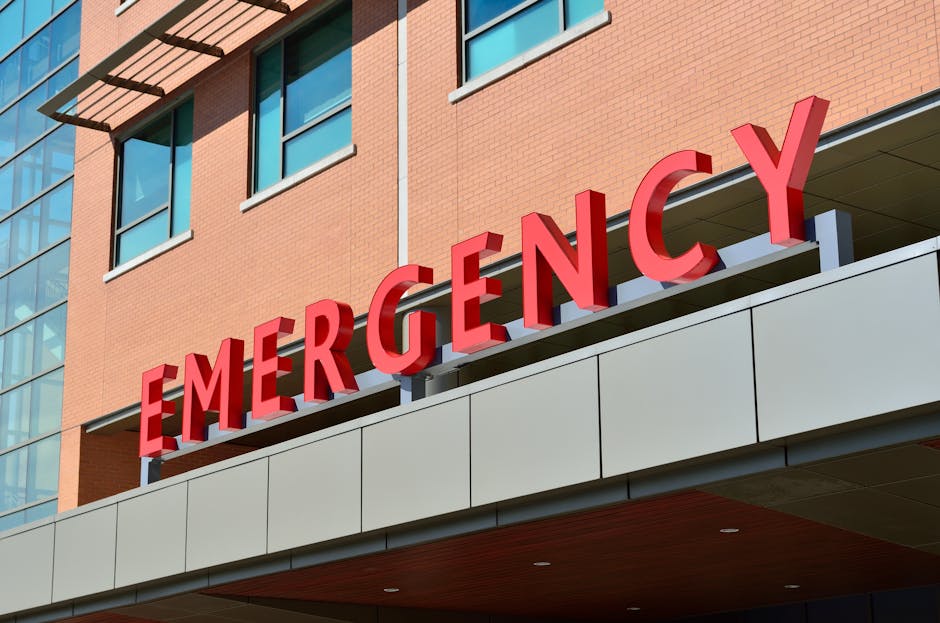Primary Care vs Urgent Care vs Emergency Room: Top 3 Crucial Choices 2025
Understanding when to choose primary care vs urgent care vs emergency room can save you time, money, and possibly your life. Here’s a quick guide to help you decide:
- Primary Care: Best for routine visits and managing chronic conditions. Think of it as your health’s home base.
- Urgent Care: Ideal for non-life-threatening issues needing immediate attention when primary care isn’t available.
- Emergency Room (ER): Reserved for serious, life-threatening conditions requiring immediate, comprehensive care.
Choosing the right healthcare option is crucial for effective decision-making and getting the appropriate medical care.

Exploring Primary Care
When to Choose Primary Care
Primary care is your go-to for routine visits and managing ongoing health needs. It’s like having a dedicated health partner who knows your medical history and helps keep you healthy over time. Here’s why and when you should consider choosing primary care:
-
Routine Visits: These are your regular check-ups to ensure everything is on track. Think of them as health maintenance appointments. Regular visits help catch potential health issues early, before they become serious problems.
-
Ongoing Care: If you have conditions that need regular monitoring, like high blood pressure or diabetes, primary care is essential. Your primary care physician (PCP) will track your progress and adjust your treatment plan as needed. This ongoing relationship helps you manage your health effectively.
-
Chronic Conditions: Managing chronic illnesses is a big part of primary care. Your PCP can help you with everything from medication management to lifestyle advice, ensuring you have the support you need.
-
Annual Exams: These yearly visits are important for preventive care. They give your doctor a chance to review your overall health, update vaccinations, and discuss any concerns you might have. Annual exams are a great opportunity to catch up on any health screenings you need.
-
Disease Management: If you’re dealing with a long-term illness, your primary care doctor is your main support. They coordinate your care, monitor your condition, and help you steer any necessary treatments or specialist visits.
-
Medication Refills: Need a prescription refill? Your primary care doctor can handle that. They ensure your medications are working as intended and make any necessary adjustments to your dosage.

In summary, primary care is the best choice for maintaining your health through regular check-ups, managing chronic conditions, and handling everyday health concerns. It’s about building a long-term relationship with your doctor to ensure you’re on the best path to good health.
Urgent Care vs Primary Care vs Emergency Room
When you’re not feeling well, deciding where to go for medical help can be confusing. Here’s a simple guide to help you choose between urgent care, primary care, and the emergency room.
When to Choose Urgent Care
Urgent care is perfect for those times when you need medical attention quickly but it’s not a life-threatening situation. Think of it as your go-to for unexpected health issues that need attention right away but don’t require a trip to the ER.
-
Minor Injuries: If you’ve sprained your ankle or have a minor cut that might need stitches, urgent care centers can help. They can handle X-rays and other basic treatments on-site.
-
After-Hours Care: Sometimes, health problems happen when your regular doctor isn’t available, like in the evenings or on weekends. Urgent care clinics usually have extended hours to help you out.
-
Walk-In Availability: You don’t need an appointment at urgent care. Just walk in when you need help. This makes it super convenient for sudden illnesses like the flu or a bad sore throat.
Urgent care is all about providing quick and efficient treatment for non-life-threatening conditions.
When to Choose Emergency Room
The emergency room (ER) is the right choice for serious and life-threatening situations. If you or someone else is experiencing severe symptoms, don’t hesitate to go to the ER.
-
Life-Threatening Conditions: If you’re having symptoms like chest pain, trouble breathing, or severe bleeding, head to the ER immediately. They have the equipment and specialists to handle critical conditions.
-
Severe Pain: Experiencing intense pain that doesn’t go away? The ER can provide the necessary care and pain management.
-
24/7 Availability: Emergency rooms are open all day, every day. They’re always ready to handle serious emergencies, no matter the time.

In short, the ER is your destination for emergencies that require immediate and advanced medical care. Don’t wait if you suspect a severe condition—get help right away.
Understanding when to choose urgent care or the ER ensures you get the right level of care when you need it most.
Virtual Care as an Alternative
In today’s world, virtual care offers a convenient way to get medical help without leaving your home. It’s like having a doctor visit, but through your phone or computer.
Video Visits
Video visits are a key part of virtual care. They let you talk to a doctor face-to-face using your device’s camera. This is great for minor ailments like a sore throat or a mild rash. You get the advice you need without sitting in a waiting room.
Here’s how it works:
- Schedule an Appointment: Use a patient portal to book a time that suits you.
- Connect with a Provider: At your appointment time, join the video call. Make sure your device has a working camera and microphone.
- Discuss Your Symptoms: Explain what’s bothering you. The doctor will ask questions and might even guide you through a self-exam.
- Get a Diagnosis and Treatment Plan: If needed, the doctor can prescribe medication or suggest follow-up care.
Minor Ailments
Virtual care is perfect for minor ailments that don’t need a physical exam. Conditions like allergies, minor infections, or a cold can often be managed this way. It’s a quick and easy way to get help and avoid spreading germs in a clinic.
Here are some common issues that can be addressed via virtual care:
- Cold and flu symptoms
- Mild allergies
- Skin conditions like rashes or acne
- Minor injuries like sprains
Telehealth
Telehealth is the broader term for virtual medical services, which includes video visits, phone calls, and online chats. It’s a flexible option that can fit into your busy schedule.
- Convenience: No need to travel or take time off work.
- Accessibility: Ideal for those in remote areas or with mobility issues.
- Cost-Effective: Often cheaper than in-person visits, and many insurance plans cover it.
Telehealth is changing how we access medical care, offering a blend of technology and healthcare that makes getting help easier than ever.
Incorporating virtual care into your healthcare routine can save time and provide peace of mind, knowing that help is just a click away.
Frequently Asked Questions about Primary Care vs Urgent Care vs Emergency Room
Why Choose Urgent Care Over Primary Care?
Urgent care is like the express lane in healthcare. It offers immediate attention for non-life-threatening issues. If you wake up with a sore throat or sprain your ankle, urgent care can help. They are open after hours and on weekends, making them a convenient choice when your regular doctor is unavailable.
Urgent care centers are designed for quick fixes. You can walk in without an appointment and get treated for minor illnesses and injuries. This flexibility is a big plus for busy people who can’t wait for a scheduled visit.
Why Visit the ER Instead of Urgent Care?
The emergency room (ER) is the place to go for critical care. It’s equipped for severe symptoms and life-threatening situations. If you experience chest pain, difficulty breathing, or severe bleeding, head straight to the ER. These facilities are open 24/7 and have the resources to handle complex and urgent medical needs.
_compressed.png?alt=media&token=dab8e119-eebe-4570-a478-f402bb4bb82b)
The ER staff is trained to manage emergencies like heart attacks, strokes, and major injuries. They have access to advanced diagnostics and can perform surgeries if needed. If your instincts tell you it’s serious, don’t hesitate to go to the ER.
Is Urgent Care Considered Primary Care for Insurance?
No, urgent care is not the same as primary care when it comes to insurance coverage. They serve different purposes and have different billing structures. Primary care focuses on long-term health management and preventive care, while urgent care is for unexpected, same-day needs.
Cost comparison is important here. Urgent care visits can be more expensive than primary care because they provide immediate service. Insurance plans may cover urgent care, but out-of-pocket costs can vary. It’s wise to check your healthcare plan to understand what is covered and how much you’ll pay.
Understanding these differences helps you choose the right care at the right time, ensuring you get the help you need without unnecessary costs.
Conclusion
Choosing the Right Care with RGV Direct Care
Navigating healthcare can be tricky, but understanding when to use primary care vs urgent care vs emergency room services can make a big difference. At RGV Direct Care, they prioritize personalized healthcare and building strong patient relationships. This approach ensures you receive the care you need, when you need it.
RGV Direct Care offers comprehensive services custom to each patient’s needs. Whether you’re managing chronic conditions like diabetes or hypertension, or seeking preventive care, their team is dedicated to your well-being. They focus on listening to patients and creating customized treatment plans that support long-term health.
Why Choose RGV Direct Care?
-
Comprehensive Care: RGV Direct Care provides a full spectrum of services, from routine check-ups to chronic disease management. They aim to keep you healthy and reduce the need for emergency visits.
-
Personalized Attention: By building strong relationships with patients, RGV Direct Care ensures that care is custom to individual health goals. This personalized approach boosts patient satisfaction and health outcomes.
-
Accessibility: With flexible scheduling and a focus on patient convenience, RGV Direct Care makes it easy to get the care you need without the long waits or high costs associated with urgent care or ER visits.
In the end, choosing the right healthcare setting is about meeting your needs effectively and efficiently. RGV Direct Care is committed to guiding you through these choices with a focus on comprehensive, personalized care that puts you first.

